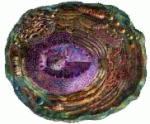Cell Biology
|
24 september 2018 18:01:41 |
| The Mcm2-Ctf4-Pol? Axis Facilitates Parental Histone H3-H4 Transfer to Lagging Strands (Molecular Cell) |
|
Tweet How parental histone H3-H4 tetramers are transferred to replicating DNA strands for epigenetic inheritance remains largely unknown. Gan et al. show that parental H3-H4 tetramers bind to Mcm2, which travels along the leading-strand template, and are then transferred to the lagging strand by the Mcm2-Ctf4-Pol? complex for nucleosome assembly. |
| 40 viewsCategory: Molecular Biology, Cell Biology |
 Arrestins as rheostats of GPCR signalling (Nature Reviews Molecular Cell Biology) Arrestins as rheostats of GPCR signalling (Nature Reviews Molecular Cell Biology)Mode of Action of Kanglemycin A, an Ansamycin Natural Product that Is Active against Rifampicin-Resistant Mycobacterium tuberculosis (Molecular Cell) 
|
| blog comments powered by Disqus |
MyJournals.org
The latest issues of all your favorite science journals on one page
The latest issues of all your favorite science journals on one page



